Choosing the perfect sake involves more than just picking one—it’s also about understanding the bike engines that power these machines. Each engine system has unique characteristics that can enhance your riding experience. Here’s a guide to the 8 different types of bike engines and what sets each one apart.
Single Cylinder Engines

Single-cylinder engines are the most commonplace workhorses in the cycling world. They are recognized for his or her smoothness and efficiency, making them a tremendous preference for a whole lot of driving options.
These engines are compact and lightweight, making them ideal for small bikes and rancid avenue trips. They excel in turning in robust low-give-up torque, best for traveling on tough terrain or in cities. However, due to the fact it’s miles made from a single piston, it could be barely lighter and less difficult to damage at excessive speeds.
The Royal Enfield Classic 350 is a high example of a single-cylinder engine bike, known for its timelessness and dependable performance. On the other hand, the KTM 690 SMC R delivers dynamic strength and agility, for avenue fans.
Parallel Twin Engines
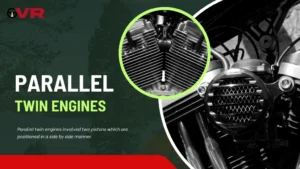
Parallel twin engines involve two pistons which are positioned in a side-by-side manner. This configuration combines the narrow structure of single-cylinder engines with high-performance potentialities.
In dealing with the parallel twin engine, both low-end torque and mid-range power are comparatively good. But with the addition of another piston, the vibrations are minimized but they are still likely to be felt. New form factors that have been embraced in the current parallel twins enhance performance and reduce noise.
The Aprilia RS660 comes with a parallel twin engine performance and responsiveness that is backed by its agile handling. Likewise, this big boy, Honda Africa Twin is enriched through its parallel twin engine, so it is suitable for both touring and off-road travel.
V-Twin Engines
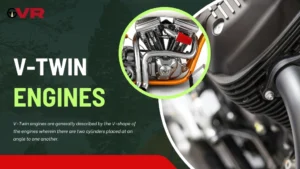
V-Twin engines are generally described by the V-shape of the engines wherein there are two cylinders placed at an angle to one another. Touring and cruiser bikes prefer this design for the great noise it produces and its remarkably low rpm torque.
V-Twin engines give low-end torque and a sound profile of its exhaust that is powerful and many cyclists admire. They normally offer a good power supply and may experience some vibration and also an imbalance of weight which may affect handling.
The latest Monster is equipped with a 937cc 90-degree V-Twin engine used in the Multistrada 942, resulting in sporty performance and a distinctive audio experience. For long distances, it simply cannot be beaten, with the Indian Thunderstroke 116 giving a thumping 1,890 cc of V-Twin for enough power and a smooth ride.
Inline-Three Engines (Triple Engines)
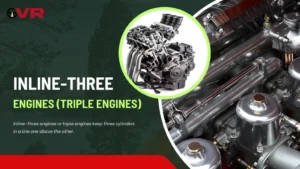
Inline-three engines or triple engines keep three cylinders in a line one above the other. This setup ensures that there is an almost equal distribution of power and at the same time flexibility.
Triple engines are characterized by high middle power and tonked high-speed power. They provide an interesting ride for those interested in the Sport and naked Bikes, with some distinctive sounds and considerable centers of gravity.
This model is available in the Triumph Street Triple and with the CC of the strong inline-three engine, offers incredible acceleration and agility. Kawasaki Ninja ZX 6R has the 636cc Inline three-cylinder which provides excellent control, handling, and acceleration.
Inline-Four Engines

Inline-four engines are valued for their efficiency and quietness; Enumerable examples include: These types of engines are characterised by four cylinders disposed of linearly, and these engines are popular in sport, and high performance bikes.
Inline-four engines are particularly suited to providing a tremendous amount of power and acceleration. They give wonderful results at high speeds and high revolutions; they while driving afford easy and powerful movement with little rocking. They are slightly more challenging when it comes to handling and also when it comes to maintenance.
The Honda CBR1000RR, a model with a 999cc inline-four powerplant is particularly outstanding in terms of power production and mode of delivery. Likewise, the Yamaha YZF-R1, with an inline-four engine eryotic engine, anaphrodisiac acceleration, and great handling.
Boxer Engines
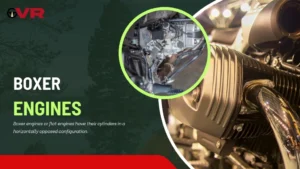
Boxer engines or flat engines have their cylinders in a horizontally opposed configuration. This design effectively reduces the bike’s center of gravity giving it good stability and maneuverability. Boxer engines are considered to be quite powerful and the cycling action is much smoother than the oscillating one.
Owners of the BMW R1250GS state that this bike is very steady and comfortable when riding it on longer distances; it is equipped with a 1,254cc boxer engine. BMW’s R NineT is an iconic product with a boxer engine – a combination of old-world charm and new-world performance – this engine type is best explained with this product.
Rotary Engines
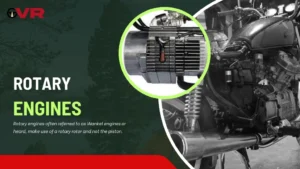
Rotary engines often referred to as Wankel engines or heard, make use of a rotary rotor and not the piston. They are small in size and relatively light in weight; thereby coming with the benefit of providing a refined and revvy ride.
Rotary engines can be considered as one of the most thrilling, offering high levels of revs and practically no vibrations. Nevertheless, some of them may have problems with fuel consumption and required service.
The rotary engine car of choice is Norton Wankel; it provides the perverted ride of rotary engines while emphasizing the uniqueness of the engine kind.
V4 Engines
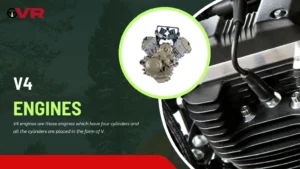
V4 engines are those engines which have four cylinders and all the cylinders are placed in the form of V. This layout uses features of V-Twin and inline-four engines and enables providing an optimal combination of power and manoeuvrability.
V4 engines provide great amounts of low-rpm torque and lots of high rpm pull. They are smaller compared to the larger sized bicycles which makes them easier to handle especially because they are more complex and therefore would cost more to manufacture and maintain.
The Aprilia RSV4 is powered by a 999cc V4 power plant and provides an outstanding power to weight ratio. Combined with the spaciousness, few production motorcycles can compare to the all-new Honda VFR1200F with its V4 engine offering power and comfort in one package.
Conclusion
The understanding of the available bike engine types is important as it will ensure that a proper type of the bike that will fit the rider and his/her needs is obtained. What’s more, every engine type is advantageous in various ways: single-cylinder engines are comparatively easy, V4 engines are somewhat complex but highly effective. By realising these distinct types of bike engines, you will be in a position to select the bike that will improve your biking experience.
Also read: Types of Bikes in India






Leave a Reply